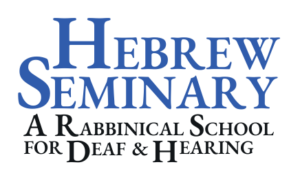On April 29 we celebrated our 25th Anniversary. Rabbi Dr. Douglas Goldhamer introduced the (Heavenly) debate: Torah v Talmud with these well-received words:
The Torah contains the 5 books of Moses, given or inspired by God to Moses. In later years, Jewish scholars would write 19 additional books. These 24 books would be called Tanach, or the Hebrew Bible, or, by the Christians, the Old Testament.
After our two ancient temples and the Sifrei Torahs, were destroyed in 586 and 70, our sages pondered how we Jews could continue to study Torah in the diaspora- Persia, Iraq, Germany, Spain, and throughout the world. And so, over a period of hundreds of years, the Rabbis wrote a multi-volume, or multi-tractate interpretation and adaptation of the Torah , which we studied in foreign lands. These books or Tractates were called the Talmud. And yet, after the passing of hundreds and hundreds of years, it appeared that each text was a Torah in itself. If you close your eyes, you can manifest a vision of the rabbis studying the original Torah, and if you continue to manifest your vision, you can see rabbis of the Talmud discussing passionately the Laws of the Torah in different countries of the Diaspora, as if these rabbis were a living community of Torah scholars.
Let me share a story that one of these rabbis of the second torah tells. It’s found in
Talmud Tractate Gittin 56B. We are told that Rabbi Yochanan ben Zakai, leader of the Jewish people, during the Roman invasion, faced a question of life and death. Vaspasian, leader of the Roman army, and soon to become the Roman Emperor, brought the Jews to almost death. Jerusalem fell. There was nothing to eat. Despair and lack of faith overtook the Jews. The Jews intuited that the second temple would be looted at any moment. The Roman Army was huge, and cruel, and had much greater weapons than the Jewish army. Yet, Rabbi Yochanan thought of a plan that saved Judaism. He hid in a coffin, and his disciples smuggled him into Vaspasian’s camp, where Rabbi Yochanan then went before Vespasian. “Why are you here?” asked Vespasian.
“We are willing to surrender on one condition,” said Rabbi Yochanan. “Give me the city of Yavney and its sages.” You see, the city of Yavney was the center of Jewish learning in Israel, and was the home of brilliant rabbis.
Vespasian saw no harm in such an agreement. He did not realize that the agreement would allow the Jews to outlive the Romans by thousands of years. The Roman Empire is no more. The Greek Empire, the Moabite kingdom, the Amalakites and Hittites have also disappeared.
But Israel survives: Rabbi Yochanan understood that the issue of Jewish survival does not depend on Israel’s possession of the land or a large strong army. But rather, on a strong sense of identity and ideology and deep love and understanding of Torah, whether it be the 5 Books of Torah, or whether it be the new Torah that paints pictures of rabbis discussing loving the laws of Torah as if these rabbis of the Talmud were a contintinuous living community of men of Torah. So the question is not which is the greater text – Talmud or Torah. But the question is which is the greater text ; Torah or Torah?
Rabbi Yochanan turned the sense of Jewish peoplehood on its head. He created what Heinreich Heine called “a portable fatherland.” This land was none other than the covenant between God and His people. This Covenant manifested itself in the first Torah and in the Second Torah. It was Torah and Torah, each supporting a covenant with God.
There is a Jewish tradition that says there is no heaven, no hell. We all go the same place when we die – where Moses and Rabbi Akiva give everlasting classes on Torah and Talmud. For the righteous, this is eternal bliss; for the wicked, this is eternal damnation. For the rest of us, it’s subject to debate…..
Thank you once again to our debaters Rabbi Pinchas Eisenbach, Allen Meyer, Rabbi Marcey Rosenbaum, Rabbi Daniel Vaisrub and moderator Arnold Pritsker for an excellent program!

Leave A Comment
You must be logged in to post a comment.